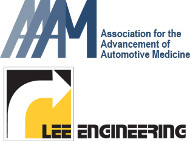Article from: www.thenewspaper.com/news/51/5136.asp
1/25/2017
Arizona: City Study Praises Speed Cameras, Independent Study Challenges
An independent 2013 study of speed cameras in Phoenix, Arizona conflicts with the results of a 2017 study conducted by Scottsdale.
 A peer-reviewed, independent study of the efficacy of photo radar on Arizona freeways in 2013 found little value to their use. In response, the city of Scottsdale on Monday released its own study to defend the value of the program, which has been a boon to the city's budget.
A peer-reviewed, independent study of the efficacy of photo radar on Arizona freeways in 2013 found little value to their use. In response, the city of Scottsdale on Monday released its own study to defend the value of the program, which has been a boon to the city's budget.
Three years ago, a team of medical researchers were asked the question, "Do speed cameras reduce collisions?" The answer that they published in the Annals of Advances in Automotive Medicine was, "No." They evaluated the effects of camera use along a 26-mile segment on Interstate 10 running through downtown Phoenix, comparing its performance against a 14-mile segment that had no cameras. Photo radar was first used on the area's freeways in October 2008 and were removed in October 2010 in the wake of public backlash.
The study controlled for variables that would affect the collision data, including traffic volume, seasonal variations in weather and the distance between cameras (![]() view study, 420k PDF).
view study, 420k PDF).
"After accounting for motor vehicle collision increases in the control segment we found that neither camera placement nor removal had an independent impact on motor vehicle collisions," the medical researchers concluded. "In other words, speed cameras did not statistically contribute to an increase or decrease in the number of motor vehicle collision."
The researchers found that studies claiming positive results for speed cameras suffered from methodological flaws.
"While studies have examined the effects of speed cameras, few have looked specifically at the relationship of speed cameras and total number of motor vehicle collisions while also accounting for confounding variables," the medical researchers concluded.
In nearby Scottsdale, however, the city's photo ticketing contractor, American Traffic Solutions (ATS), issued 44,000 automated citations from 18 mixed speed and red light cameras, plus four mobile speed cameras, which generated a total of $3,953,997 in revenue in 2014. To protect the revenue stream, the city commissioned Lee Engineering, which holds a multi-million-dollar traffic engineering services contract with the city, to co-author a report with city traffic engineering analyst Andrew Merkley.
The new Scottsdale study looked at up to five years of collision data before and after the use of automated ticketing machines, though it carefully limited the collision numbers to camera-enforced approaches, instead of considering the net effect of a camera's presence on the entire intersection.
The study did not review crash report narratives to determine the actual cause of accidents, nor did it consider traffic volume and any of the other confounding variables considered by the medical researchers. The results of this method proved positive for the city.
"The overall results of this study reveal that Scottsdale's implementation of photo enforcement is having a positive safety impact by reducing crashes at enforced segment and intersection locations and may also be having a positive safety impact on nearby intersections," Scottsdale's report concluded.
In a memo to the city, Lee Engineering promised a second phase to the report that would take traffic volume into consideration. A copy of the Scottsdale memo is available in a 2.3mb PDF file at the source link below.
Source: Photo Enforcement Evaluation (Scottsdale, Arizona, 1/23/2017)
Permanent Link for this item
Return to Front Page
 A peer-reviewed, independent study of the efficacy of photo radar on Arizona freeways in 2013 found little value to their use. In response, the city of Scottsdale on Monday released its own study to defend the value of the program, which has been a boon to the city's budget.
A peer-reviewed, independent study of the efficacy of photo radar on Arizona freeways in 2013 found little value to their use. In response, the city of Scottsdale on Monday released its own study to defend the value of the program, which has been a boon to the city's budget.